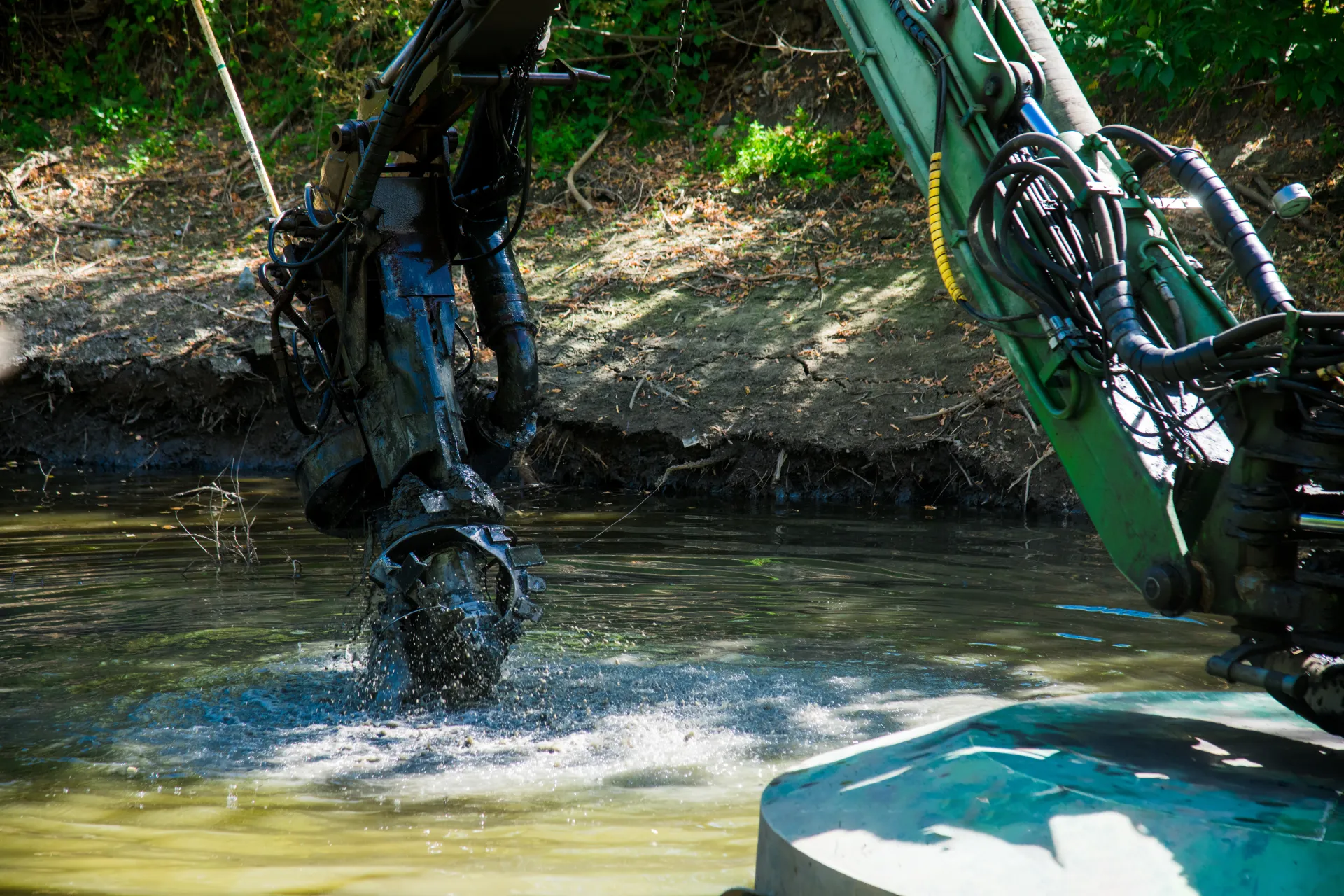Selecting the right sand dredging equipment directly affects operating costs, production efficiency, and regulatory compliance. Poorly matched systems can lead to fuel waste, delays, and unnecessary maintenance, especially for high-stakes sectors like mining, public infrastructure, and energy. Procurement leaders and project managers require solutions tailored to the scope of work, rather than generic machinery that risks underperformance or overspend.
Sand extraction isn’t limited to coastlines. It spans mine site reclamation, sediment control in canals, port deepening, tailings recovery, and industrial land development. From inland pits to tidal channels, each site demands equipment aligned to material density, access constraints, and disposal strategy.
This is where the distinction between compact and large-scale solutions becomes critical. Some operations benefit from modular, mobile units, while larger infrastructure or offshore programs depend on industrial-scale sand dredging equipment with higher output and longer operating ranges. Understanding these differences sets the stage for informed decision-making.
Understanding Sand Dredging Equipment
At its core, sand dredging equipment is designed to excavate, transport, and discharge sediment efficiently and safely. Whether used for reclamation, channel maintenance, or tailings removal, each system must match the material type, reach requirement, and disposal plan. In environments where precision and minimal disruption are priorities, river sand dredging equipment offers targeted sediment removal in shallow or sensitive zones. For restoration and navigation work, many municipalities and contractors rely on waterway dredging methods that minimise downtime and ecological impact.
The industry’s machinery falls broadly into two categories: hydraulic and mechanical. Hydraulic dredgers use suction and pumps to move material through pipelines. This group includes cutter suction units and compact environmental systems commonly deployed as river sand dredging equipment. They’re also widely used in waterway dredging projects where ongoing sediment accumulation threatens navigation or flood control.
Mechanical dredgers extract silt with grabs, buckets, or excavator arms. They are frequently employed in small areas, mixed-material beds, and applications that require direct loading onto barges or shore stockpiles.
Supporting components have a substantial impact on performance in both tiny and large-scale systems. Slurry pumps control flow rate and discharge distance. Hoses and pipes manage material transfer and pressure requirements. Floating platforms, modular pontoons, and excavator attachments enable huge installations and portable sand dredgers to work in confined or isolated environments. These similar attachments can aid in increasing productivity during waterway dredging or adjust river sand dredging equipment for seasonal maintenance.
The basic distinctions between hydraulic and mechanical systems ultimately shape mobility, throughput, and material handling capacity. However, the effectiveness of sand dredgers is determined by their platforms, hoses, and pumps in real-world applications.
Compact Sand Dredging Equipment
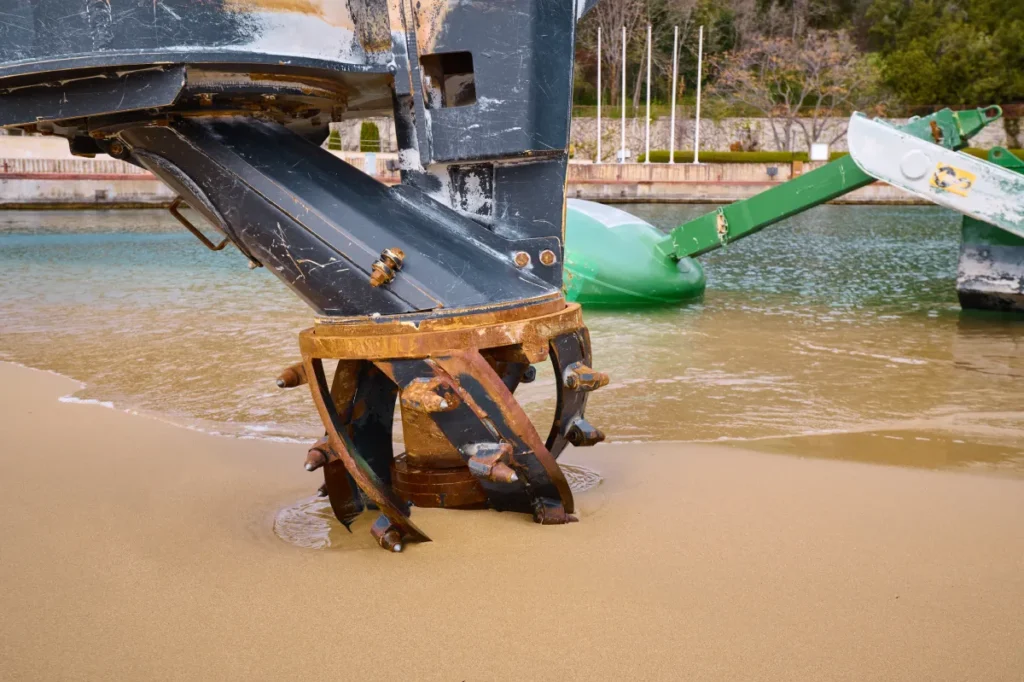
Compact systems are designed for use when substantial infrastructure is impractical due to access issues, environmental restrictions, or financial limitations. Without the logistical needs of massive ships or high-volume pump networks, these solutions offer targeted productivity.
Suitable Equipment Types
Plain suction dredgers are among the most straightforward forms of sand dredging equipment, using suction pipes to extract loose material from shallow zones. They’re commonly deployed for maintenance in canals, ponds, and shorelines where precision outweighs volume.
Auger suction dredgers provide better control, particularly in delicate areas. Their horizontal auger heads reduce disturbance, making them ideal for waterway dredging tasks aimed at sediment control or environmental preservation.
Backhoe and clamshell dredgers provide mechanical excavation in areas where hydraulic options may be restricted. Mounted on barges or pontoons, these units are often used with river sand dredging equipment when working close to banks, harbours, or confined access sites.
Ideal Use Cases
Compact machinery is particularly effective where targeted sediment removal is required. Many municipalities rely on river sand dredging equipment for desilting programs, stormwater channel maintenance, and sediment recovery around bridge foundations. In smaller ports or canal systems, contractors use these setups for routine waterway dredging without disrupting nearby infrastructure.
They are also perfect for environmental remediation, agricultural water storage maintenance, and shallow industrial basins. Modular platforms and transportable pumps allow compact sand dredgers to be deployed in remote locations without the need for huge cranes or towing vessels. Examples of restricted-access locations that commonly choose these systems due to practical or regulatory limitations include quarries, inland rivers, and private industrial sites.
Performance & Cost Considerations
One of the main benefits of compact sand dredging equipment is its cost-effectiveness. These systems are appealing for short-term projects, municipal budgets, and targeted maintenance contracts because of their lower initial outlay and lower running expenses. Typically, they request simpler fuel and pipeline arrangements, reduced staff, and faster setup times.
However, throughput is limited compared to large-scale platforms. Production rates depend on pump sizing, material density, and discharge distance. In waterway dredging tasks, this trade-off is often acceptable when precision and mobility matter more than bulk output. When using river sand dredging equipment, operators must consider how quickly material needs to be removed and whether disposal logistics can support sustained work.
Despite capacity limits, compact dredgers provide operational agility. They can be deployed quickly, repositioned with minimal support, and scaled with supporting pumps or excavator attachments. Many small-to-medium sediment removal programs offer a balanced blend of performance, control, and cost stability.
Large-Scale Sand Dredging Equipment
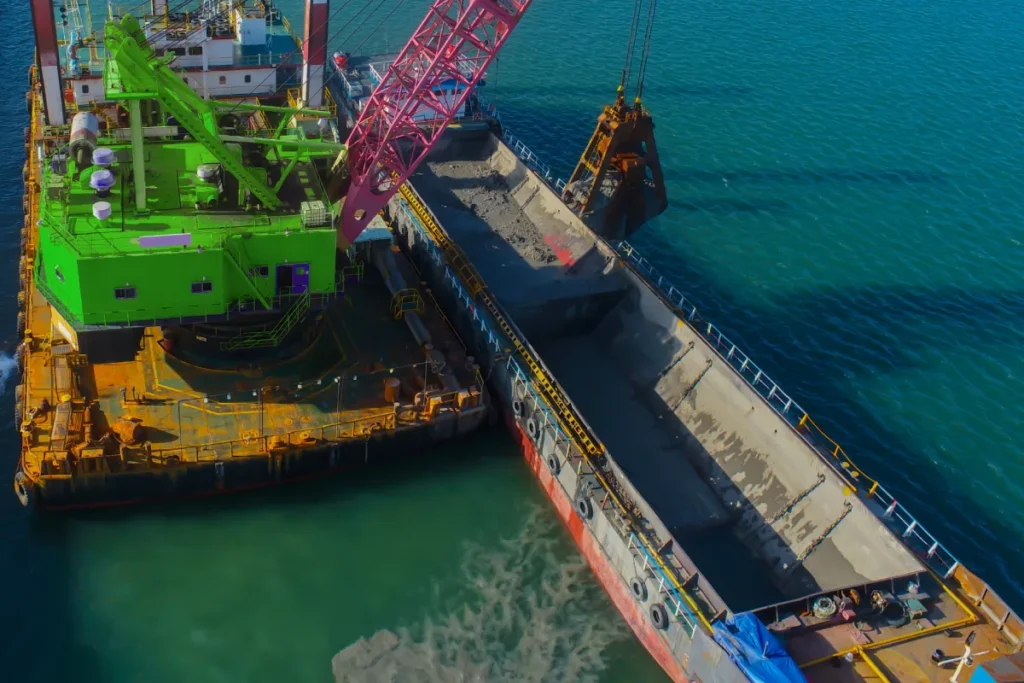
Large industrial and government-backed projects demand high-output systems, extended operating ranges, and the infrastructure to manage continuous material transport. These solutions are engineered for bulk removal, offshore demands, and strategic asset development.
Suitable Equipment Types
Cutter suction dredgers (CSD) are among the most widely used large-scale systems. They combine rotating cutter heads with powerful pumps to extract compacted soils and sand efficiently. Their ability to operate continuously makes them suitable replacements for fleets of smaller river sand dredging equipment when volume targets are high.
Trailing suction hopper dredgers (TSHD) are self-propelled vessels designed for offshore and coastal work. They vacuum sediment into large onboard hoppers, transport it to a discharge location, and redeploy quickly. These vessels are often used in tandem with waterway dredging strategies for port deepening or marine construction.
Bucket ladder dredgers are mechanical systems built to handle dense, compacted materials such as gravel or hard clay. Although slower than hydraulic options, their ability to cut through challenging substrates exceeds the capabilities of compact river sand dredging equipment.
Ideal Use Cases
For port growth, offshore sand supplies, and coastline reclamation, a large-scale sand dredger is necessary. Long discharge lengths, continuous operation, and the capacity to handle shifting seabed conditions are all necessary for these projects. Large dredgers allow resource reuse and environmental compliance in mine reclamation or tailings recovery.
These systems are used by government and defense organizations for strategic infrastructure improvements, coastal resilience projects, and naval base upkeep. They also work on bulk waterway dredging projects, where shipping lanes, harbors, and access channels must be deepened to comply with regulations.
Performance & Cost Considerations
Production rates are the core advantage of large-scale dredgers. Their pumping power, hopper capacity, and discharge range enable sustained removal volumes far beyond even clustered river sand dredging equipment setups. Transport logistics, via hoppers, barges, or pipelines, are integrated into the design to manage long-distance relocation of material.
However, these benefits come with higher resource demands. Fuel consumption, crew size, maintenance schedules, and support vessels contribute to operating costs. Onshore or offshore pipeline networks and booster stations may also be required for extended discharge routes linked to waterway dredging operations.
Investment in large-scale machinery is typically justified when long-duration or high-output projects are involved. ROI is driven by production volume, compliance savings, and reduced project timelines compared to staging multiple compact systems. When workloads exceed the practical capacity of small sand dredging equipment, scaling up ensures deadlines, environmental obligations, and transport efficiency are met.
Key Decision Factors: Compact vs. Large-Scale
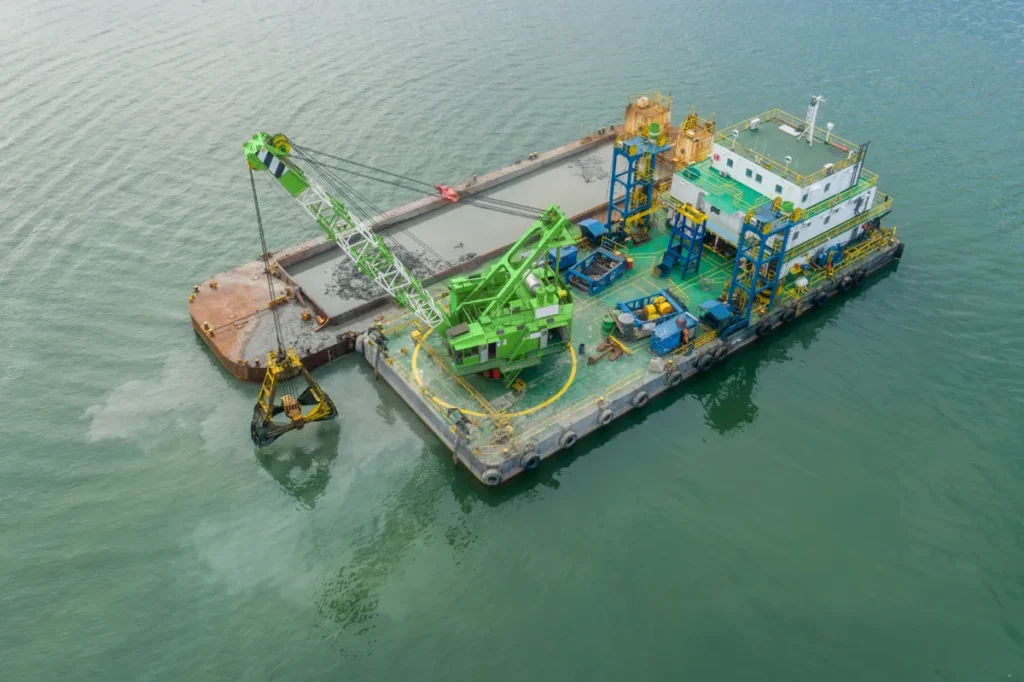
Selecting the right scale of sand dredging equipment begins with understanding the physical characteristics of the material. Fine silt and loose sand can be removed efficiently with hydraulic systems, while gravel, clay, and compacted deposits often require mechanical excavation or cutter-based solutions. Matching the equipment to the substrate reduces wear, fuel use, and downtime.
Project scope and depth are equally influential. Shallow basins, canals, and levee zones may only need transportable units, while deepwater extraction or reclamation projects depend on high-capacity sand dredging equipment with extended reach and pumping power. Production rate targets often dictate whether a compact setup is sufficient or whether industrial-scale systems are justified.
Mobility and site accessibility can limit equipment options. Restricted channels, remote areas, or inland sites often rule out large vessels. In these cases, modular or barge-mounted systems, especially smaller or mid-sized sand dredging equipment, offer practical deployment without major logistical support.
Environmental and regulatory requirements define how aggressively material can be removed. In protected estuaries or ecosystems, precision and low-disturbance methods take priority over volume output. Compliance with turbidity limits, sediment control, and habitat protection may determine whether compact or high-output sand dredging equipment is viable.
Another important consideration is the disposal plan. Projects requiring containment ponds, land reclamation, or nearshore discharge require machinery that can move materials via barges, hoppers, or pipelines. The sediment characteristics and disposal distance influence pump selection, hose configuration, and booster needs.
Finally, timelines and operational risk shape procurement decisions. For urgent maintenance or seasonal works, compact systems can be mobilised quickly and used alongside river sand dredging equipment when capacity needs are moderate. Conversely, long-term infrastructure or reclamation projects benefit from large-scale sand dredgers that sustain higher throughput and align with broader waterway dredging objectives.
Supporting Systems That Influence Scale
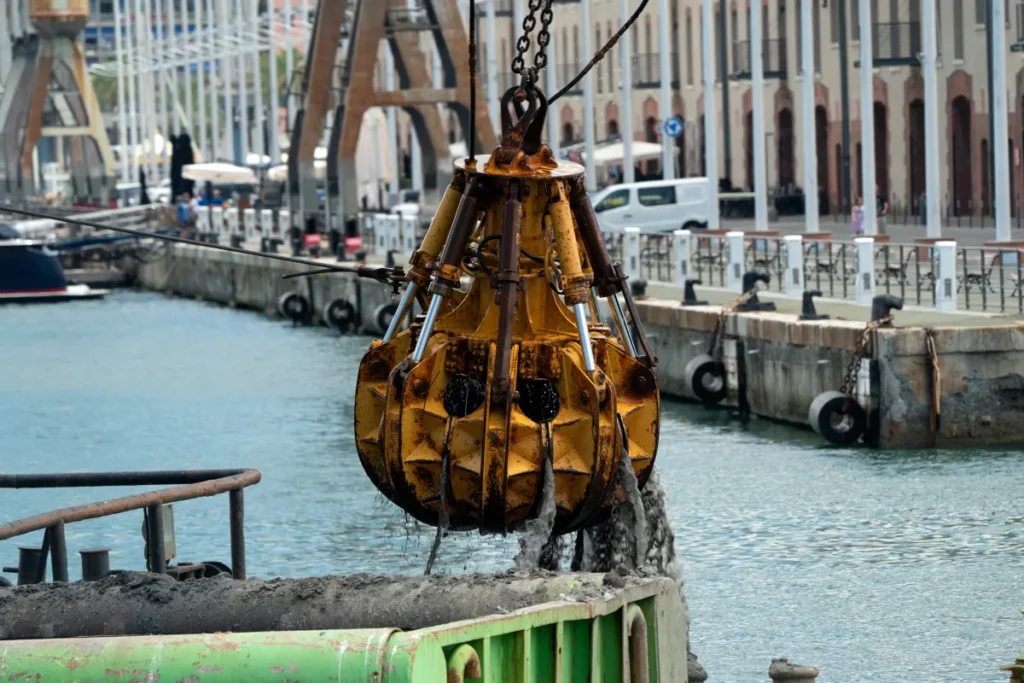
The efficiency and viability of any dredging operation depend not just on the primary machinery but on the supporting systems that determine output, reach, and reliability. These components often determine whether a compact setup with river sand dredging equipment is sufficient or if a large-scale configuration is needed.
Slurry pumps are central to performance. Their power, flow rate, and resistance to abrasion directly impact the distance and speed at which material can be transported. Compact projects that rely on river sand dredging equipment may use smaller pump units for short discharge distances. At the same time, large-scale operations depend on high-capacity pumps, sometimes supported by booster stations, to maintain consistent flow over long pipelines.
Configurations of hoses and pipelines affect discharge flexibility, pressure control, and material handling. Compact tasks and maintenance programs, where access is limited and quantities are smaller, frequently use short, flexible hoses. Engineered pipeline systems that can handle continuous loads, changing topography, and high-pressure conveyance without compromising flow efficiency or operational safety are essential for large-scale river sand dredging projects.
Floating platforms and excavator attachments add versatility and expand deployment options. Modular pontoons allow smaller dredges, excavators, or river sand dredging equipment to operate in remote water bodies or shallow channels without relying on deep-draft vessels. In larger operations, floating conveyor systems, cranes, or integrated pump platforms support continuous dredging across dynamic environments.
Automation, monitoring, and compliance technologies are increasingly integrated across both compact and large-scale river sand dredging equipment deployments. Real-time flow monitoring, GPS positioning, turbidity sensors, production tracking, and safety systems help operators meet regulatory expectations and optimize output. These tools reduce manual oversight, improve precision, and allow better control over fuel use, downtime, and environmental impact.
Each of these supporting elements contributes to scalability, efficiency, and overall cost control, shaping how sand dredger systems perform under different operational demands.
Conclusion
Selecting the appropriate dredging setup is ultimately a matter of aligning performance expectations with project realities. Matching equipment scale to material type, production goals, and site constraints helps prevent oversizing or underutilisation, both of which can erode budgets and strain timelines. When the right balance is achieved, operating costs stabilise, mobilisation becomes more efficient, and compliance risks are easier to manage.
For decision-makers, procurement choices should be guided by clear criteria: how much material needs to be moved, over what distance, in which type of environment, and under what regulatory framework. Factoring in site access, fuel use, labour requirements, and disposal logistics provides a realistic view of total lifecycle cost. Where multiple stakeholders are involved, government agencies, mining contractors, port authorities, or industrial operators, consistency in output and risk reduction often carries more weight than headline capacity.
Taking a structured, needs-based approach ensures investment in systems that perform at the right scale, whether that involves compact units for focused maintenance or high-volume platforms for strategic development.


